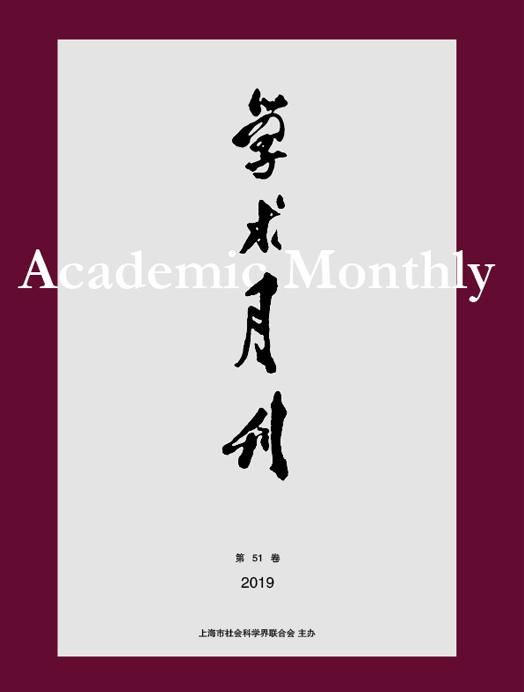Citation:
Lanhai WEI and Yibing WANG. Fine genetic genealogy and microscopic study of history[J]. Academic Monthly, 2022, 54(10): 189-199.

Fine genetic genealogy and microscopic study of history
-
Abstract
For the evolutionary history of ancient and modern populations in East Asia over the past five thousand years, previous research of molecular anthropology has achieved some results, which has attracted the attention of academia and the public, but there are also many ambiguities, deviations or errors, which have caused a lot of controversy. At present, the spatial-temporal resolution of the basic data used in research of molecular anthropology has been greatly improved. For example, the resolution of phylogenetic tree of paternal Y-chromosome has been refined to about 70 years, and researchers had identified many paternal genetic sub-branches that are special to a population or a paternal family. In addition, ancient DNA data are also accumulating rapidly. The fine genetic pedigree of molecular anthropology and the concepts and theories of cultural anthropology are expected to be combined with historical research and applied to the study of micro issues. This paper attempts to discuss its possibility and methodology with two topics as examples, including: 1) in the near ancient period, the origin of Aisin Gioro family and Gioro Hara, and the change and rise process of Jurchen tribes in the Yuan and Ming Dynasties; 2) In early ancient period, whether the duke of Zhao and King Wen of Zhou families had the same origin recently, the source of Shang culture tradition among Zhao family and the diversity within the Ji Zhou tribe. It is expected that the discussion in this paper will be helpful to the further multidisciplinary cooperative research in the future.
-

-
References
-
Access
-
-
[1]
Jin DING
. An Analysis of the Historical Facts of “the Alliance of Kiyang” Recorded in “the Four Inscriptions of Kiyang”. Academic Monthly,
2021, 53(7): 179-186.
-
[2]
Shuxian YE
. Anthropological Turn: An Interdisciplinary Leader of New Liberal Arts. Academic Monthly,
2022, 54(8): 143-154.
-
[3]
Zhenfu WANG
. Primitive “Culture of Belief” and Anthropological Turn. Academic Monthly,
2022, 54(8): 129-142.
-
[4]
. . Academic Monthly,
2016, 48(02): 169-178.
-
[5]
Qing TAO
, Xiao’an LIANG
. Marxist Anthropological Research in the Perspective of Political Science. Academic Monthly,
2022, 54(8): 67-79.
-
[6]
NAN Xing
. Kantian Freedom: Anthropological not Metaphysical. Academic Monthly,
2023, 55(8): 27-40.
-
[7]
Ke FAN
. The Living Wisdom and Ecological Civilization in an Anthropology Perspective. Academic Monthly,
2020, 52(3): 141-154, 120.
-
[8]
Qingjie WANG
. Is Heidegger’s Fundamental Ontology A Philosophical Anthropology?. Academic Monthly,
2019, 51(8): 5-12.
-
[9]
,
. . Academic Monthly,
2017, 49(02): 106-116.
-
[10]
Mingming WANG
. Association, Comparison and Reconsideration: Fei Xiaotong’s Thesis of “Heaven-Man Unity” and the Anthropological “Ontological Turn”. Academic Monthly,
2019, 51(8): 143-167, 178.
-
[11]
,
. . Academic Monthly,
2017, 49(06): 178-184.
-
[12]
LI Junqiang
. The Historical Writing and Pedigree Making of Pre-Tang Dynasties. Academic Monthly,
2023, 55(6): 180-192.
-
[13]
Wenjiao YANG
, Jin SUN
, Jianxin GUO
, Chuanchao WANG
. The Origin and Dispersal of Indo-European Languages from the Perspectives of Linguistics, Archeology and Genetics. Academic Monthly,
2021, 53(5): 175-185.
-
[14]
WANG Xinman
. Italian Marxist Historicist Cultural Philosophy—— On the New Interpretation of Historical Materialism by Labriola, Mondolfo and Gramsci. Academic Monthly,
2024, 56(3): 44-52.
-
[15]
Handing HONG
. Hermeneutics and the Eternity of Human Mind. Academic Monthly,
2018, 50(10): 5-16.
-
[16]
. The Discourse Transformation and Constructed Genealogy in Intellectual History. Academic Monthly,
2018, 50(03): 139-150.
-
[17]
Naiqiao YANG
. The Multi-interlingual Translation from “Vernehmen” to “觉知”: On the Deconstruction of the Transcendental Meaning of Metaphysics by Martin Heidegger’s Ontological Hermeneutics. Academic Monthly,
2023, 55(3): 162-176.
-
[18]
Bo YANG
. Redrawing the Chronology of the between Eastern Zhou Dynasty and the Western Zhou Dynasty from the Historical Materials of Zheng State in Tsinghua Bamboo Slips. Academic Monthly,
2021, 53(8): 187-194.
-
[19]
ZHOU Wu
. . Academic Monthly,
2018, 50(6): 178-184.
-
[20]
ZHAO Jing
. . Academic Monthly,
2018, 50(9): 149-161.
-
-




 沪公网安备 31010102003103号
沪公网安备 31010102003103号 DownLoad:
DownLoad: